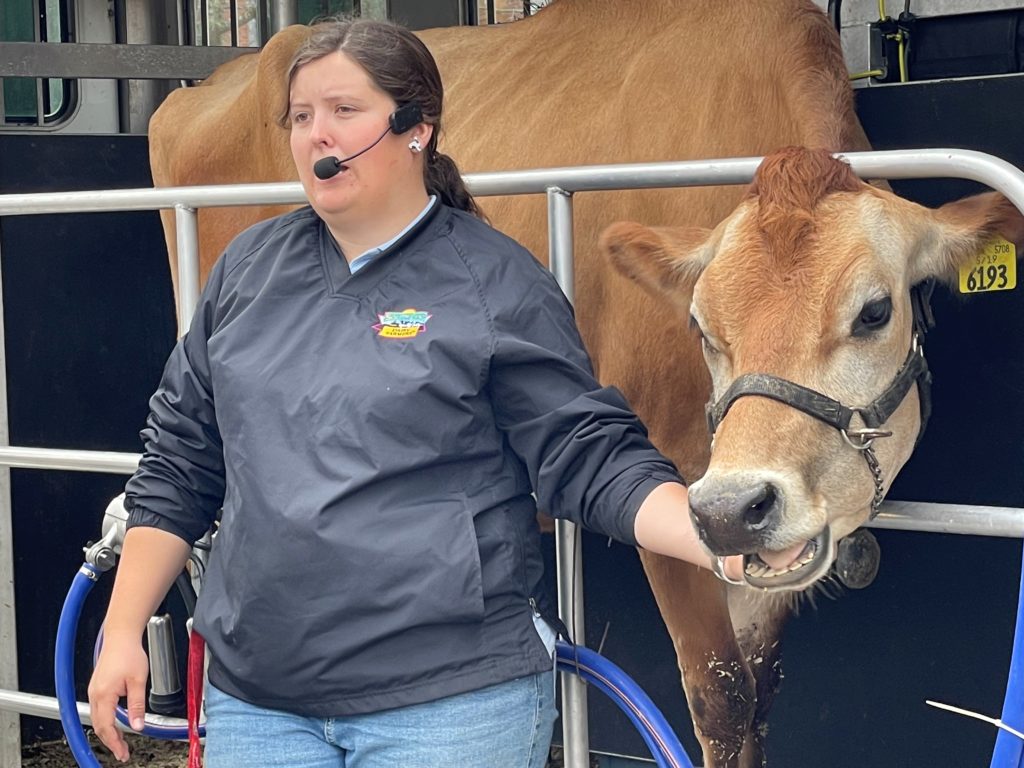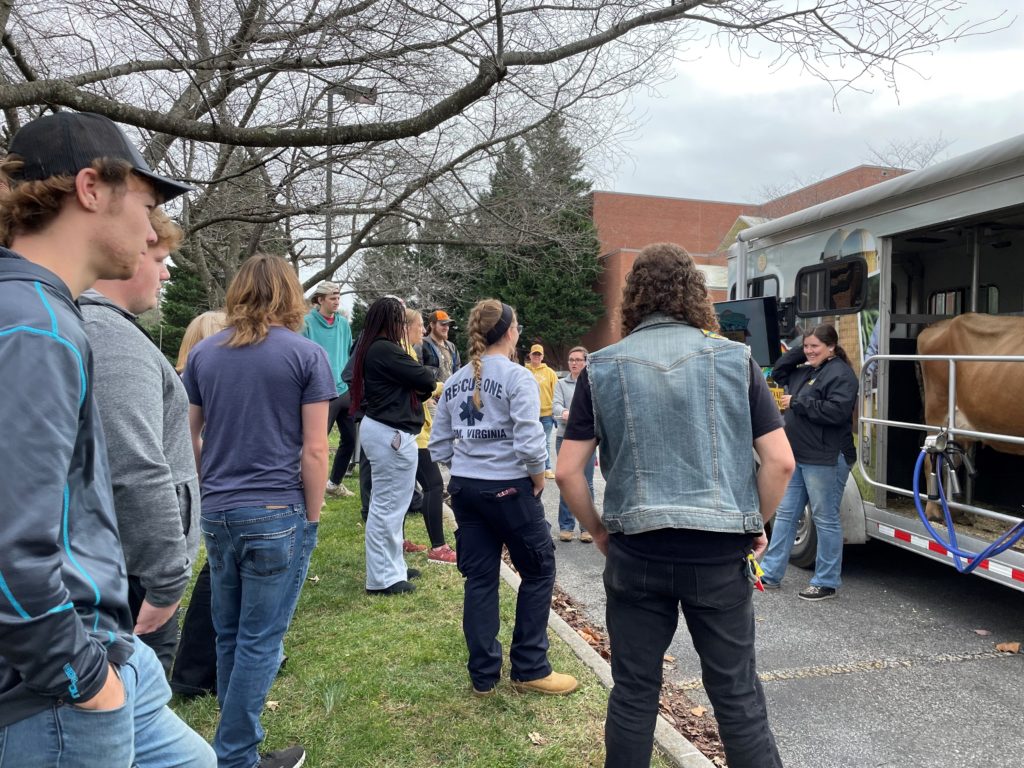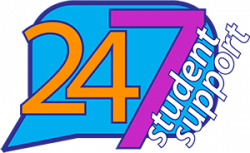
Southland Dairy Farmers brought the Mobile Dairy Classroom to Virginia Western Community College on Thursday, Nov. 10. Mobile Dairy Classroom Instructor Morgan Cole led education sessions and milking demonstrations with Honey, a Jersey cow, which is the second most popular dairy cow in the United States (after Holsteins). The hourlong presentation included extensive facts about cow anatomy, feeding, habits and housing, as well as the 13 essential nutrients found in milk.
Assistant Professor of Biology Dr. Mallory White directs the Agriculture Program at Virginia Western. “Only 1% of Americans are directly involved in food production, so there is a lot of curiosity and also misconceptions around agriculture,” she said. “Our STEM team wanted to show students and others in the college just how much science, technology and care are involved in agriculture.”
Honey chewed her cud during Cole’s instruction, which Cole noted was one sign that she was comfortable. Honey’s collar included a tag that is part of the robotic milking system on the Shenandoah Valley farm that houses her; robots scan the tag for information such as her ID and whether she is eligible for milking at a certain time. Cole then demonstrated proper cleaning to help prevent mastitis in cows before she hooked up the milking claw. Through gentle suction, the equipment pumped several gallons of milk into a glass jar; more cleaning followed the milking session. Cole said milk is about 100 degrees, and at dairy farms, it is cooled to 36 degrees in a bulk tank before being shipped to a processing plant, where pasteurization and homogenization occurs.
After a test run last summer, this was the classroom’s first full visit to Virginia Western, with two separate demonstrations. Honey and her counterpart, Clover, who had calved the previous day, keep a full schedule touring around the state. Members of White’s Animal Science class attended the 1 p.m. session along with other students, faculty and staff.
“The short visit showed us that raising dairy cattle involves robotic milking technology, advanced record-keeping software that tracks and monitors each animal’s production and changes in production, and pride from each dairy farmer,” White said.
Cole built on knowledge the students already had about cow anatomy and encouraged everyone who might have the opportunity to thank dairy farmers, who never get a day off from milking and caring for their herds.
White shared some of her students’ comments after the session. They observed that the cow “seemed genuinely happy and comfortable with being milked.” The session gave a sense of scale: “It was amazing to see how big a dairy cow really is.”
And for others, the educational information had one downside: “Our dreams were crushed when we learned that chocolate milk does not come from brown cows.”






